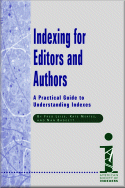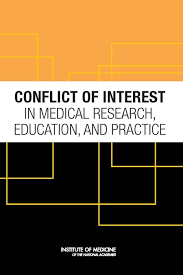
New York: Oxford University
Press; 2009. 264 pages. Paperback $40.00. ISBN-13: 978-0-199-55267-2.
The cover photo of Practising Science Communication in the Information Age shows a young woman in safety goggles and a white coat examining a small vial. Don’t be fooled, though; the book has nothing to do with the procedures of work in a laboratory but instead, according to the introduction, “explores contemporary practices of science communication”. The use of the word contemporary is important; the book focuses on how this communication has changed—or not changed, as the case may be—in various types of mass media since the advent of Web 2.0.
It might be difficult for some of us to remember now, but there was a time when the Internet provided primarily one-way communication. Web 2.0 describes the existence and mainstream use of such sites as Facebook, Twitter, and YouTube, which encourage user involvement.
In Practising Science Communication, experts in a variety of disciplines related to science or science communication share their views of how science communication has been changed by the increasingly interactive online environment. The authors also explore some of the questions that this creates related to ownership rights, public versus private communication, and the validity of new media.
The book is a collection of essays organized in six sections, each with two or three chapters. The approach—as one might guess from the spelling of the title—is from a British perspective. All the editors and all but two authors are in the United Kingdom, so the book focuses mainly on the United Kingdom. That can sometimes be confusing for American or other audiences because some of the authors assume a greater familiarity with British culture and geography than might be warranted.
The Web has changed many of the ways in which scientists communicate. For example, chapter 2.2 (“Communicating Physics in the Information Age”) illustrates how physics researchers often use blogs to share what they are studying and to get input. Journals, too, make use of the Internet; many offer online versions of articles, and some journals publish exclusively online. Aside from making them easier to search and access, though, it is unclear whether the Web has fundamentally changed journals.
Many of the chapters imply that most scientific communication really hasn’t changed much with the advent of the digital age. Although journals put content online, the print medium is in no danger of dying, and peer review has been largely unaffected by the Internet, according to the book’s authors. Although radio programming is available as podcasts, most people still listen with the technology they have used for decades. Chapter 6.1 (“The Development of Our Dynamic Earth”) illustrates how technology has had little effect on museums. The final chapter discusses “Café Scientifique”, a casual venue in which scientists speak to interested members of the general public. Apparently, the gatherings eschew the use of technology— no slide projectors, no microphones, and certainly no computers—because organizers believe that it distances the audience from the speaker. The only exceptions are in cases with no practical alternative, for example, when a scientist for whom travel isn’t feasible is speaking to an audience in another country.
Although the book is not appropriate for most casual readers, it would serve as an excellent textbook for a course in science, technology, and society. All the editors are senior lecturers or professors at the Open University, and the instructional approach is clear from the structure and content of the book. The volume also functions nicely as a resource for professionals in the field, particularly as a starting point for further study. In general, the material is fairly dense and often quite theoretical, so the volume is not the type that you might read in an afternoon. However, the useful index makes the book a good reference.
Reading the chapters out of order, as occasion arises, would also mitigate the book’s main weakness: repetition. For example, authors of consecutive chapters relate the same anecdote; this is especially strange when one considers that some chapters are cited in other chapters and so the authors presumably had the benefit of reading at least a few of the other chapters.
As in any anthology, some sections are more effective or relevant than others. Chapters 5.3 (“Speaking to the World: Radio and Other Audio”) and 6.1 (“The Development of Our Dynamic Earth”) feel primarily like advertisements for BBC radio and an Edinburgh museum, respectively. In addition, I felt that not all the chapters were appropriate for the stated purposes of this book; Chapter 1.3 (“Patents and the Dissemination of Scientific Knowledge”), which discusses the trend of scientists to patent their work and the resulting concerns about secrecy of information in science, is interesting but has little to do with the digital age itself.
This volume is certainly not a comprehensive overview of how science communication functions in the early 21st century, but it isn’t designed to be. There is too much information to be covered in a single volume, especially one that includes both theoretical and practical perspectives. Each chapter makes a small point, but that point often only spurs more questions, which makes the “references”, “further reading”, and “useful websites” sections at the ends of the chapters very helpful. That is also one reason that the book would serve as an excellent textbook: each chapter evokes questions for reflection and discussion.
The online environment changes rapidly, and it is important to keep up with what the changes mean for science. However, doing so within the traditional book format is challenging. Many of the chapters were written in 2007; 2 or 3 years later, they are probably already out of date. Ironically, perhaps the best way to discuss how the Internet changes communication is to communicate over the Internet.
Christina Sumners is a science and technology journalism graduate student at Texas A&M University and a Science Editor intern.

Indexes. Fred Leise, Kate Mertes, and Nan Badgett. Medford, NJ: Information Today Inc, in association with the
American Society of Indexers; 2008. 148
pages. Soft cover $40.00. ISBN-13: 978-
157-387-3345.
This is indeed a practical guide. It covers everything one would want to know, including not only types, styles, and formats of indexes but how to hire and deal with an indexer, how indexers calculate their fees, how to review an index, and indexing software and electronic files. Despite the title, the book seems to be addressed to editors and to take authors’ vested interests for granted.
Leise, Mertes, and Badgett rightly stress the importance of communicating with the indexer about what the publisher and author expect and what they prefer for depth of indexing, format, and schedule. It is crucial for the indexer to know what kind of index is wanted because the depth of index (the number of citations per page) determines the length and cost of the index, regardless of how cost is figured. Some editors start the discussion by stating their rates, but the indexer still has to know what product an editor wants before deciding how to compile the index. In short, if I don’t know what you want, I don’t know how much it costs. The appendix contains a sample agreement.
The audience is the most important consideration. An indexer who knows the intended users can conjure up what they would probably want to know and what terms they would use to find it. For example, if the book were about naval history, a naval historian would probably want the index to refer to whatever scrap of information was associated with the name of any ship whenever it was mentioned but not so the more general reader; the index of a book on hematology for hematologists would probably refer to each mention of each cell type but not if the intended reader were a blood donor or transfusion recipient.
A more common flaw than overlooking words and concepts is citing words that are only mentioned—not discussed—so that the reader is led to a page that has no substantive information. (Such a book is said to be overindexed.) Generally speaking, if a phrase begins with “such as” or “for example”, the list of terms that follows would not be indexed, because they illustrate something else; it is the something else that gets indexed.
The book devotes nearly three pages to “editorial changes” and blandly states, “The indexer must be notified of any changes in text or page numbers” (p. 102). From personal experience, I can say that this situation can be an indexer’s nightmare. I always say, “I need FINAL page numbers.” But if text has to be moved around, I feel much more comfortable if I myself (rather than the guilty-feeling editor) change the page numbers and delete or add terms. (Indeed, the book’s authors recommend that the editor or author not make such changes.) Of course, if this were too time-consuming, it would imply an additional fee. Good communication should make this thankfully infrequent process as painless as possible.
The authors did not cover suggestions for nonstandard pagination, such as for cumulative journals that publish multiple volumes in a year and start with page 1 every January (for example, Science Editor). I could also quibble that Leise, Mertes, and Badgett do not discuss the relative merits of en dashes versus hyphens for ranges of numbers. (They use en dashes.) Perhaps this discussion has gone out of fashion; then again, inasmuch as the benefits of using en dashes are primarily visual, they may have thought that the purview of the designer.
If you want to be a knowledgeable purchaser of indexes, buy this book.
Winfield Swanson is a self-employed writer, editor, and indexer (who compiled her first index in 1971) in Washington, DC. She has compiled indexes for CBE Views and Science Editor for the last 10 years.

Research, Education, and Practice. Bernard Lo and Marilyn J Field, editors.
Washington, DC: National Academies Press; 2009. 440 pages. Paperback $61.95. ISBN-13: 978-0-309-13188-9.
Conflict of interest has long posed controversies, especially in the medical field. This book extensively discusses conflicts of interest in various medical arenas and presents recommendations for addressing them.
To begin, the book acknowledges benefits of collaboration among academic medicine and pharmaceutical, biotechnology, and medical-device companies. It then focuses on conflicts of interest that can ensue. Included are chapters on conflicts of interest in biomedical research, medical education, and medical practice. Among other chapter topics are principles for identifying and assessing conflicts of interest, institutional conflicts of interest, and the role of supporting organizations (such as accrediting organizations, licensing agencies, and journals). Chapters end with recommendations. For example, the chapter titled “Conflict of Interest and Development of Clinical Practice Guidelines” states, “Three desirable steps are for journals to require that all clinical practice guidelines accepted for publication describe (or provide an Internet link to) the developer’s conflict-of-interest policies, the sources and amounts of funding for the guideline, and the relevant financial interests of guideline panel members, if any.”
Throughout the report, boldface and italic headings orient the reader. This book may help students, health professionals, medical researchers, and editors to avoid or address conflicts of interest. It also can aid those in leadership positions in developing or refining policies for doing so.
Barbara Mendoza, a graduate student in science and technology journalism at Texas A&M University, wrote this book note while an intern at Science Editor.
